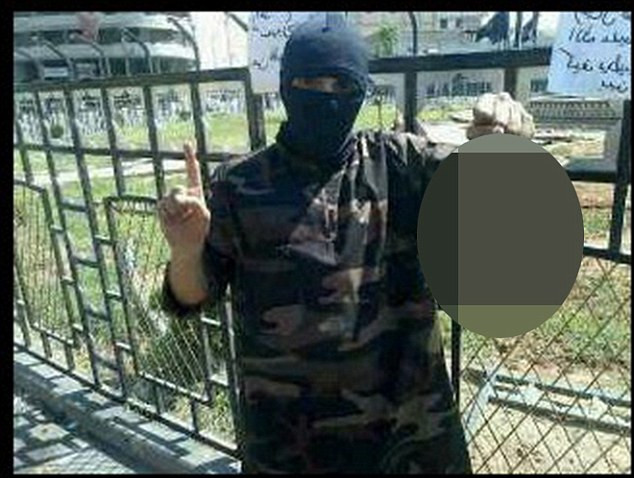The Reason Behind Isis Beheadings: Terror
With Isis' tweets of decapitations shocking the world, IBTimes examines the history of this brutal practice

"Chillin with my homie, or what's left of him," tweeted Abdel-Majed Abdel Bary, a 23-year-old rapper from Maida Vale turned Islamic State (Isis) militant, beside a picture of himself holding the severed head of an enemy combatant.
The picture is just the latest in a long series of horrific images of beheadings tweeted by the militant group as part of its online terror campaign. Other images show the heads of executed prisoners impaled on spikes in the centre of Raqq, Syria, where Isis hold sway, and others decapitations in progress.
But why has beheading become the favourite form of execution amongst the Islamist militants on the battlefields of Syria and Iraq, and other Islamist terrorists worldwide?
A history of beheadings
Last year, Michael Adebolajo and Michael Adebowale murdered Fusilier Lee Rigby in Woolwich, London, reportedly attempting to behead him after running him down with a car.
During his trial, Adebolajo said they had carried out the killing in revenge for the treatment of Muslims abroad and told the jury he loved al Quaida.
Further back, in 2002, journalist Daniel Pearl was beheaded on video after being kidnapped by al-Quaida militants in Pakistan.
A number of other western hostages were also beheaded on video by al Quaida in Iraq leader Abu Musab al-Zarqawi, believed to be one of the key figures in the formation of the group that would become Isis.
Experts believe the tactic is used for a variety of reasons, including to unnerve the enemy on the battlefield, to deter the west from committing forces in the conflict.
"The graphic nature of beheading, the focus on the individual, and the act of bodily desecration involved all render this far more chilling than the explosion of a bomb, even where the latter's death toll is greater," writes Shashank Joshi is a senior examination fellow of the Royal United Services Institute, in the Telegraph.
In a 2005 article in Middle East Quarterly, expert Timothy Furnish argues that the practice has a long background in Islamic culture.
Fashions of terror
He describes how terrorists develop new forms of atrocity, as the shock value of older ones wears off.
"Decapitation has become the latest fashion. In many ways, it sends terrorism back to the future," he writes.
Two verses from the Koran are used by terrorists to justify the practice.
"When you meet the unbelievers, smite their necks," says an ayah, or verse in Sura (chapter) 47.
Sura 8:12 reads: "I will cast dread into the hearts of the unbelievers. Strike off their heads, then, and strike off all of their fingertips."
Decapitations are also described in some of the earliest histories of Islam.
Muhammad's earliest biographer, Ibn-Ishaq, describes how the prophet approved the beheadings of between 600 and 900 men from the Jewish Banu Qurayza tribe following the Battle of the Trench.
It was a common form of execution under the Ottoman Empire, where it was the "primary form of symbolic aggression among Ottoman soldiers", according to historian James J Reid.
In Saudi Arabia, where a strict interpretation of Sharia law is enforced, beheading is the form of punishment for a range of crimes, including drug running and apostasy, with approximately 80 people believed to have been beheaded by the kingdom last year.
Though there are no calls for beheading as punishment for specific crimes in sharia law, it is one of a range of executions that may be used, along with stoning or hanging.
Others though, argue that the verses cited are traditionally interpreted by Muslim clerics as calls to ferocity in battle, and not as justifications for decapitation.
Muslims condemn Isis
Muslim leaders in the Middle east and in Europe have condemned Isis.
Egyptian human rights activist Sa'd Al-Din Ibrahim, in his weekly column for the Egyptian daily Al-Masri Al-Yawm, compared the actions of Isis to the Nazis, and says that they do great damage to Islam.
The practice of decapitation is not unique to Muslim societies.
Many western societies executed prisoners by decapitation for hundreds of years, with the guillotine last used in France for an execution in 1977.
In Slate, Nina Rastogi points to decapitations described in the Bible, as evidence that the practice exists across religious traditions.
© Copyright IBTimes 2025. All rights reserved.




















